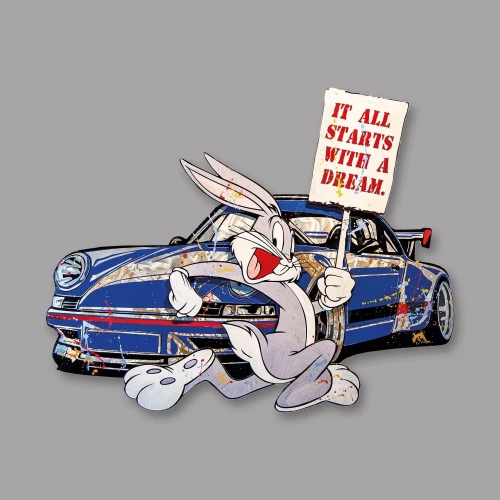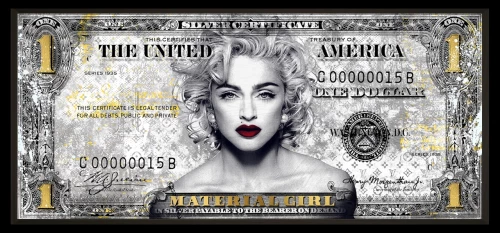
Devin Miles
Devin Miles
German Pop Art between Icon and Glamour Critique
Born in 1961 in Duisburg, Devin Miles is one of the leading figures of contemporary German Pop Art. His works are a layered fusion of digital design, classical screen printing, and painterly intervention. Glossy surfaces are not ends in themselves, but carriers of cultural memory and critical reflection.
His artistic path began unusually: after two vocational trainings, including one in horticulture, Miles turned to art only in 2001. Early proficiency in digital image editing laid the foundation for his distinct aesthetic, in which Photoshop, manual screen printing, and gestural painting coalesce into a visual language of their own. Though often produced in series, each piece appears unique. Color gradients, gold leaf, spray techniques, and the characteristic layering of text fragments and iconic portraits create a complex visual fabric that oscillates between reverence and irony.
Named after jazz trumpeter Miles Davis, the artist shed his birth name, Michael, early on. With a clear vision and entrepreneurial resolve, he began in a small studio in Bargteheide—selling two motorcycles to finance his first screen printing press. Today, he refines his works with 25-karat gold, runs an art business on the Baltic coast together with his wife, and sells up to a thousand works annually—from serial pieces to large-scale originals.
Since the mid-2000s, his preferred medium has been brushed aluminum; later he added shallow wooden boxes adorned with leaf metal. While his subject matter clearly nods to postwar American Pop Art, it is infused with a distinctly European sensibility. Icons such as Romy Schneider, James Dean, or Marilyn Monroe appear alongside literary figures and references to Greek mythology—often set against the backdrop of mass media headlines or emblematic brand imagery.
His work is internationally collected and exhibited, with galleries in Germany, Switzerland, Spain, the USA, and Israel representing his oeuvre. Since 2015, he has also been supported by the corporate collection of Reinhold Würth. Despite growing recognition, Miles continues to emphasize the craft behind his work. The studio remains his focal point, his rhythm of production as demanding as ever. His aim: to bring joy—and to reassert the value of art in an era of commercialization.








